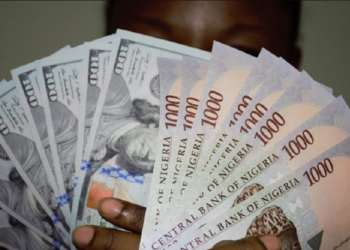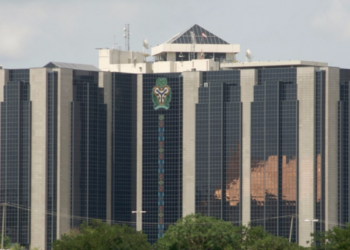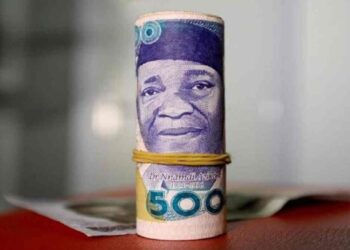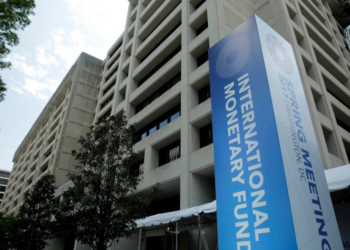The Central Bank of Nigeria’s Intervention Funds Programme, estimated at N10.3 trillion, has achieved a repayment rate of 75.8%.
The report also states that N193 billion of the total loans disbursed have been declared lost and another N418.9 billion remains doubtful.
This information is according to a report detailing the breakdown of the bank’s intervention funds over the years.
Nairametrics exclusively obtained a copy of the reports, which was last updated in September 2023 by bank officials.
Recommended reading: CBN Intervention: N2.1 trillion loan from banks’ Differentiated CRR remain unpaid since 2018
What the report is saying
According to the report, out of the N10.3 trillion in intervention funds, N4.4 trillion has been repaid, while approximately N5.8 trillion remains outstanding. Some of the loans are tenured meaning they only fall due when the principal repayments mature.
However, only N969.8 billion of the outstanding amount was past due, as some loans had repayment tenures extending years beyond 2023. Based on this, the report claimed the percentage of repayments to amounts due was 75.8%.
The apex bank report also indicates that N289 billion of the loans are performing, N67.9 billion is substandard and N418.9 billion is doubtful. The report also indicates that N193.9 billion of the loans are lost.
The apex bank Governor, Yemi Cardoso, has repeatedly criticized the intervention funds carried out under the leadership of Emefiele, claiming that the bank could not implement the interventions appropriately.
However, sources within the bank also suggest some of the claims of the apex bank governor were made without considering the impact of some of the programs.
One official informed Nairametrics that some of the loans funded some of the projects currently being touted by the Tinubu administration as part of fulfilling its renewed hope mandate.
The officials cited the Blue and Redline Rail projects, recently released fertilizers to farmers and some of the food released from the strategic reserve of the apex bank.
They also stated that the tepid economic growth currently being experienced could have been worse were it not for the intervention funds.
The sources all pleaded anonymity as they could be victimized for stating their independent opinions on the matter.
Another source also pointed out that while some of the funds may have appeared to be “printed” most were sourced from the CRR deposits of banks. The apex bank funded over 72% of the N10.3 trillion loans.

As of September 2023
- Total Loans: N10.3 trillion
- Funding: CBN funded N7.49 trillion, versus Deposit Money Bank funded N2.86 trillion
- Repaid: N4.5 trillion
- Interest Received: N607 billion
- Principal Past Due: N889 billion
- Interest Past Due: N89 billion
- Total Past Due: N979 billion
Note: Some of the figures appear slightly different in the report
Breakdown of some of the key loans
The Anchor Borrowers Program (APB) of the central bank received N1.29 trillion or around 10% of the total disbursement.
- The program’s objective is to create economic linkages between smallholder farmers (SHFs) and Anchors. Over 4.6 million farmers benefited with about 6.1 million hectares funded.
- The report also stated that the number of integrated rice mills rose from 6 in 2015 to about 22 in 2022 while 18.4 million direct or indirect jobs were created.
- Despite these gains as claimed by the bank, only N717.9 billion has been repaid with N183.5 billion lost.
- The amount considered lost under the ABP represents about 94.8% of the total loans lost for the entire intervention funds. About N55 billion of the loans were considered doubtful and N36.7 billion substandard.
Under the Manufacturing Sector support, the apex bank issued loans totalling N2.4 trillion and labelled as “Differentiated Cash Reserve Requirement (DCRR)”.
- The DCRR were funds sterilized by the central bank from bank deposits (otherwise called CRR debits).
- The apex bank also stated that the objective of the loans was to Increase output and foreign exchange earnings, generate employment, diversify the revenue base, and provide inputs for the industrial sector on a sustainable basis.
- The bank also listed 499 beneficiaries of the loans including the likes of Lagos State
- Government Blue and Redline projects, Imo State Government, Oyo State, and Ogun State.
- Also listed as beneficiaries include Mangal Industries and BUA Refineries.
- Lagos State Government had also borrowed N196 billion from the intervention funds.
Non-performers
Despite achieving a high repayment rate overall, several lending facilities have significantly lagged in their expected repayments.
- Among the worst performers, the Solar Connection Facility (SCF) managed only a 45.8% repayment rate. Approximately N7 billion had been disbursed, out of which only N1.6 billion was repaid from the N3.5 billion due.
- The Targeted Credit Facility (TCF) fared even worse, with a mere 16.39% repayment rate. Of the N419 billion disbursed, only N41.3 billion was repaid from the N252 billion due.
- The number of beneficiaries who took advantage of the facility was reported as 830,831.
- Perhaps the most significant defaulters were the 4.59 million beneficiaries of the Anchor Borrowers’ funds, who received a total loan of N1.28 trillion.
- Out of the N1.1 trillion due, only N543 billion was repaid, achieving a repayment rate of 49.37%.
- According to the CBN, under the Anchor Borrowers’ Programme (ABP), farmers cultivated 6,135,150 hectares of 21 agricultural commodities across the 36 states and the FCT.
- The commodities financed include cassava, cocoa, cotton, fish, groundnut, maize, soybeans, wheat, cattle, sorghum, ginger, castor seed, sesame, tomato, yellow pepper, oil palm, cowpea, and onion, through 23 participating financial institutions (PFIs).
Recommended reading: CBN N10.3 trillion intervention fund: Nigeria’s health sector gets mere 1% allocation
However, the program faced significant challenges, including increased post-harvest losses due to poor logistics and insecurity across the country, a drop in per-hectare productivity owing to the inability of smallholder farmers to afford fertilizers, spill-over effects of the 2022 floods, high input costs, and security challenges.
While the manufacturing sector has shown a better repayment rate, the apex bank also cited several challenges that could impact their ability to continue servicing the loans.
- For example, it mentioned a downturn in the manufacturing sector’s performance due to high energy and logistics costs, inflationary pressures, foreign exchange depreciation, and the departure of multinationals from the country.
- According to the report from the apex bank, substandard loans included 15% from the Anchor Borrowers Program (ABP), 25% from the Micro, Small, and Medium Enterprises Development Fund (MSMEDF), and 20% from CAC. Doubtful loans include 10% from disbursements to NMFB, 10% from ABP, and 25% from MSMEDF.
- Loans classified as lost are 50% from ABP, 25% from MSMEDF, and 10% from CAC.






















